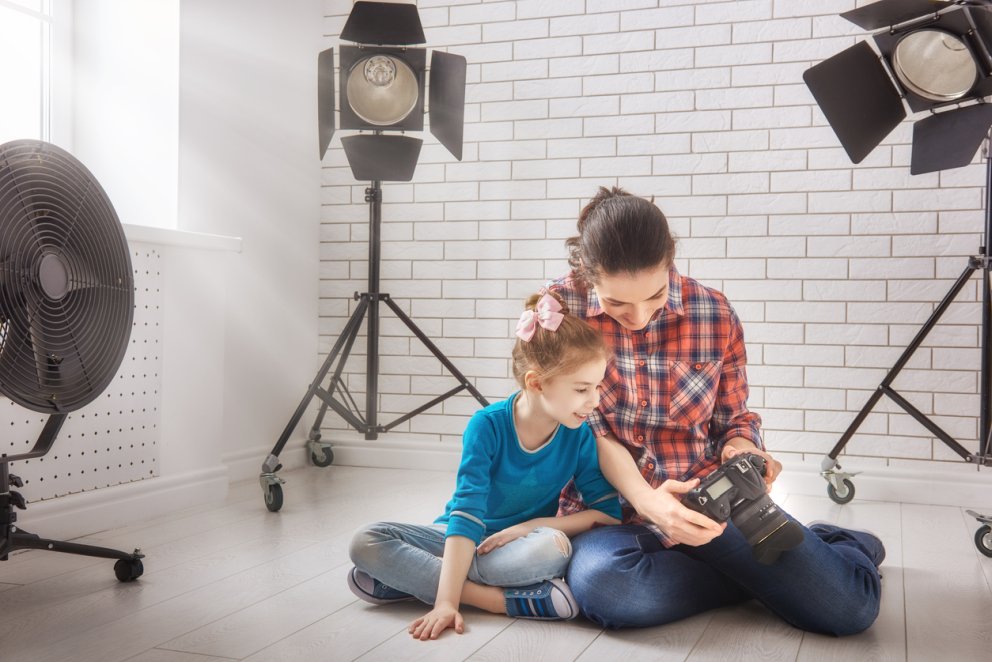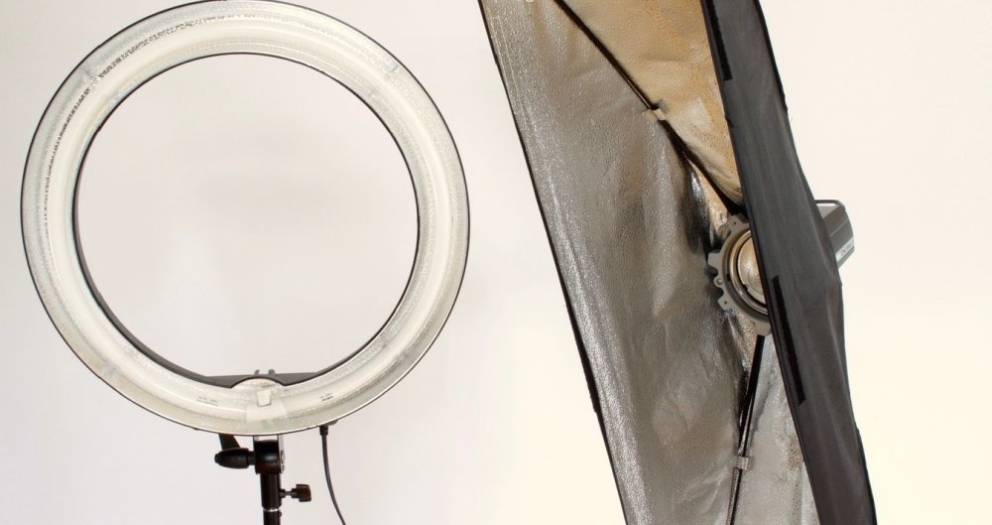
Photographing with Artificial Light
How Continuous Lighting and Photoflash Help Ensure Better Photos in Interior Spaces
In order to perfectly illuminate an object or person in a room, the room’s own lighting combined with the sun shining from outside are often not enough. To take photos that are better exposed, artificial light sources, such as a continuous lighting source or a studio flash, can be used. In addition, artificial lighting also comes with the advantage of being able to control the lighting effects, which makes it possible to reproduce various conditions in your home studio.
Here you’ll learn more about which lighting sources are especially well suited for certain applications.
Getting Accustomed to Artificial Lighting Through Continuous Lighting
When trying to get accustomed to working with artificial lighting, you should first get acquainted with lighting effects. Continuous lighting sources (link only available in German) are an easy start for this. These kinds of lights are used to illuminate a motif for a longer period of time and originate from the film and television industries. By now, continuous lighting has become an integral part of studio photography since it’s easier to assess various lighting effects than when photographing with flash. Continuous lighting is also especially easy to work with since the effect of the light is visible immediately after set-up. You can directly assess casted shadows and reflections as well as the effect of repositioning the lighting. Most continuous lighting sources available also come with a dimming function to make the light even easier to control.
Continuous lighting sources are available in various designs, such as ring-shaped or spotlights, on which various light modifiers can be attached. The term “light modifier” is used to describe lighting aids such as soft boxes and umbrella diffusers. Using such aids helps provide soft light and put it in the right shape. Furthermore, there are various lamps available, such as halogen, HMI, or LED. These lighting sources (link only available in German) mainly differ in terms of light output, service life, cost, and heat generation.

A very cost-effective option is the portable floodlight, which is a halogen light that can also be used as a continuous lighting source. This kind of light is not only reasonably priced, but is also available in many different variants. At the same time, however, floodlights come with the drawback of becoming hot very quickly and are a bit difficult to reposition during use since they do not come with very many carrying handles. It’s also important to make sure to keep a safe distance between continuous lighting sources that put off a lot of heat and flammable objects. Moreover, in most cases floodlights are unable to put out as much light compared to natural lighting.
A few better alternatives to floodlights are continuous lighting sources with either HMI or LED lights. Both of these come with the advantage that they do not put off nearly as much heat as compared to halogen lights. In addition, HMI lights are very high-power and are comparable to natural lighting in their light output, but also come at a bit of a higher price. LED lights, on the other hand, may not be as high-performance as HMI lights, but are a bit more versatile in their range of applications. LED lights come with the advantage that they, unlike halogen and HMI lights, are also available in compact and battery-powered models. This makes them easy to transport and they can be moved to other locations without having to worry about a power source. Additionally, LED lights come with the option of stepless transitioning between natural and artificial light, which makes them quite versatile in their possible applications.
Photographing with a High-Output Flash
In contrast to continuous lighting sources, photoflashes impress with their powerful performance since these are quite noticeably more high-output. Photoflashes also come with a high degree of flexibility. Using a handy shoe mount flash, which is also called a dedicated flash (link only available in German), is practical for photographing on the go. For bigger projects being shot in enclosed spaces, a studio flash unit (link only available in German) is more suitable. The intensity is adjustable with both the dedicated flash and studio flash. This wider spectrum of adjustable light output is another advantage of using a flash unit compared to continuous lighting sources.

Generally speaking, flash units are very high-output, which also makes it possible to photograph with shorter exposure times. Being able to shoot with shorter exposure times will allow you to freeze movements, which can make a difference when photographing either people or animals in motion.
Using a flash unit comes with a disadvantage, however, that could make life a bit harder for people a bit newer to photography. The flash unit is usually synchronised with the camera and only flashes for a short moment, which makes it nearly impossible to judge the effect of the light ahead of time. You can only see the effect of the light when looking at the resulting photo. In the end, however, it’s worth it to work with a flash and to practice judging its effect since using a flash offers you a wide range of applications thanks to its performance and different possible settings.
If you don’t want to have to set up a whole photo studio in your home, you can make use of the enormous light intensity of a dedicated or shoe mount flash. These can be mounted to the camera’s hot shoe and will thus be directly synchronised with the camera. Alternatively, the dedicated flash can be separated from the camera. This means it can be externally set up on a tripod so that the flash won’t come from the same direction the camera is photographing from. There are a few different ways you can synchronise a shoe mount flash with your camera. One option is connecting the flash to your camera with a cable. Alternatively, some models offer you the possibility of using both the dedicated flash synchronously with the camera’s integrated flash (the so-called master function of the camera’s flash). The third possibility is either radio or remote control, for which the supplemental purchase of a flash trigger is necessary.
Conclusion
Artificial light sources (in contrast to natural light) offer the advantage of being controllable. Being able to control the light makes it possible to produce perfect lighting conditions not once, but time and again. When natural lighting conditions aren’t optimal, such as indoors during winter, artificial light sources make it possible to shoot well-illuminated photos when it might otherwise not be possible.
Continuous lighting sources and photoflashes can also be combined to make use of both their strengths. When doing this, the continuous light will provide good general lighting with the flash adding the right accents.
